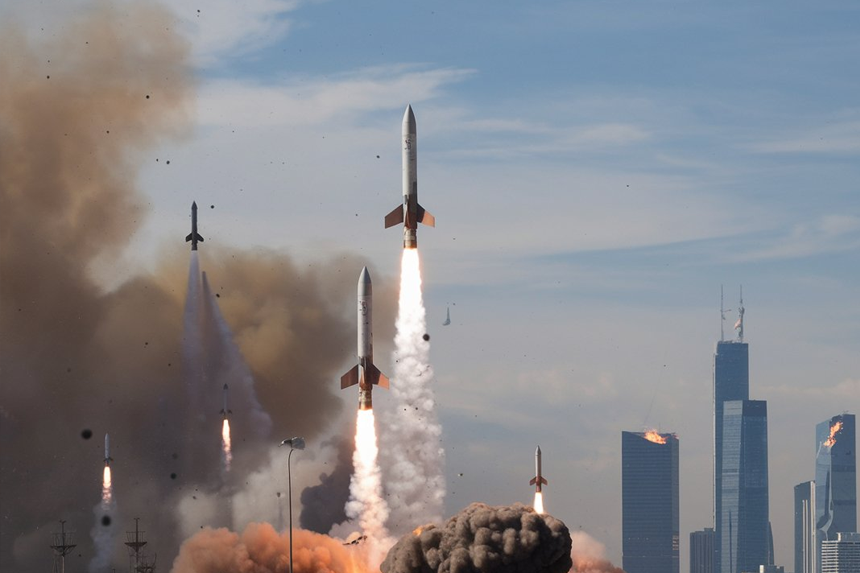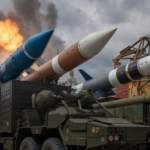Why is Ukraine Pressuring for Expanded Missile Use?
The US and Britain seem ready to remove their limitations on Ukraine’s long-range missile use against targets within Russia within days. Ukraine has these missiles right now, but it can only launch them at targets inside its borders. Kyiv has been aggressively campaigning for weeks to get these limitations removed so that attacks on targets within Russia would be possible.
What is Storm Shadow and How Does It Work?
Storm Shadow is an Anglo-French cruise missile designed as Scalp in France with a maximum range of around 250km (155 miles). Britain and France have given Ukraine these missiles with the understanding that they can only be used against targets inside Ukraine’s borders. Launched from the aircraft, the rocket hugs the ground, speeds almost at the speed of sound, and then falls to detonate its high-explosive payload. Storm Shadow is an excellent weapon in combat, especially against fortified bunkers and ammo stockpiles, as it is pretty efficient.
Successful strikes against Russia’s Black Sea naval headquarters at Sevastopol and their effects on the safety of Crimea for the Russian military have shown Storm Shadow’s accuracy.a
Why Does Ukraine Need Long-Range Strikes Now?
Russia is daily bombing Ukraine; many of these strikes come from Russian planes flown from far within Russian territory. Kyiv has voiced annoyance at being unable to target the bases from where these attacks originate, likening this to battling with “one arm tied behind its back.”
Based on these limitations, a recent security conference in Prague argued that Russian military airbases are better guarded than Ukrainian citizens affected by the strikes. Although Ukraine has created a creative and successful long-range drone program, these drones typically intercept and have limited payloads. Kyiv contends that long-range missiles, such as American Atacms and Storm Shadow, with a range of 300km, are crucial for deterring Russian air assaults.
Why Has the West Hesitated to Lift Restrictions?
Worries of escalation mostly cause Western hesitancy. Letting Ukraine employ Western-supplied missiles against targets deep within Russia raises concerns about a violent reaction from President Vladimir Putin. Such behaviour raises questions about whether retaliation strikes on transit hubs for missiles headed to Ukraine, including an airfield in Poland, may result.
Should such a situation arise, NATO’s Article 5 might be triggered, sparking a possible confrontation between the alliance and Russia. With Russia’s full-scale invasion of Ukraine on February 24, 2022, the White House has sought to assist Kyiv while avoiding confrontation with Moscow, therefore averting a catastrophic nuclear clash. The US has, however, let Western-supplied missiles be used against targets in Crimea and the four partially occupied areas unlawfully acquired by Russia in 2022. Although Russia regards these areas as part of its territory, the US or the international community does not acknowledge this assertion.
What Impact Could Lifting Restrictions Have on the Conflict?
The possible lifting of these limitations might have noteworthy consequences, although not definitive. Moscow has already responded to Kyiv’s advocacy for long-range Western missile deployment within Russia over a protracted period. Beyond the reach of Storm Shadow, Russia has moved bombers, missiles, and associated equipment farther from the Ukrainian border.
Although Russian air defence has changed to fight Storm Shadow’s danger within Ukraine, this work will be considerably more difficult given Moscow’s territories that may suddenly be targeted for attack. Widening the missile range might complicate Russia’s military logistics, command and control, and air support, raising Russian operations’ expenses and time.
The easing of limitations might provide Ukraine with two significant advantages. First, it may “unlock” the more expansive Atacms system. Second, it might provide Russia with a problem about the whereabouts of its air defences, therefore facilitating the penetration of Ukrainian drones inside Russian borders. Storm Shadow could affect the war even with these possible benefits; it is unlikely to change the tide.








